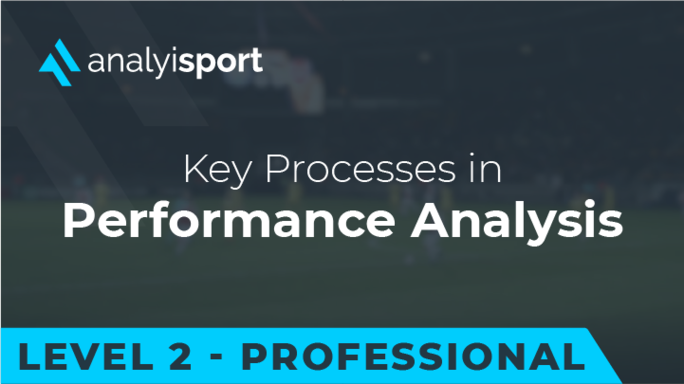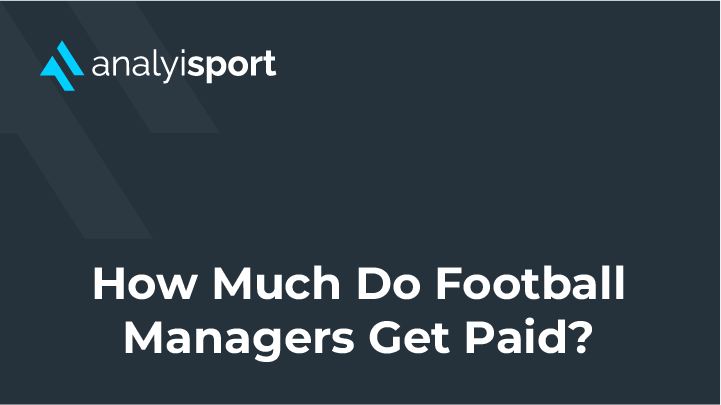How Can Fantasy Premier League Managers Use Performance Data?
In February 2021, Aston Villa lined up for a key Premier League match against Leicester City without their captain, Jack Grealish. Villa’s manager, Dean Smith, had said little prior to the game that would suggest Grealish was suffering from an injury. The midfielder, who had barely missed a minute of Premier League action since the start of the season, had been in fine form, notching six goals and ten assists to help push his side into contention for a European spot.
Yet while the team sheet came as a surprise to some in the media, one group of observers remained unmoved. Some 48 hours earlier, the blogs, Twitter feeds, and forums dedicated to Fantasy Premier League had been awash with rumours of a potential Grealish injury. The source of these rumours was a Twitter account that tracks the fantasy football decisions made by staff and players at Premier League clubs. In the days leading up to the Leicester match, five staff members at Aston Villa had transferred Grealish out of their fantasy football teams, triggering an alert about a probable injury. When the source of the leak became apparent, the club banned their staff from continuing to play the game.
This incident underlines the increasing sophistication with which fantasy football managers now seek to gain an edge over their rivals. Indeed, if you read anything about Fantasy Premier League today, you will see performance metrics like ‘expected goals’ and ‘expected assists’ mentioned regularly. But how can managers get the best out of these new tools? And what are some of the common problems with the way they tend to be used?
Where to access performance data
Performance data on Premier League players is available from a large number of websites. One of the most popular blogs dedicated to Fantasy Premier League, Fantasy Football Scout, includes a subscription service that allows managers to view data from Opta for Premier League players. For the 2020/21 Premier League season, an annual subscription was priced at £19.99. Other sites like Understat provide expected goals and expected assists figures for all current Premier League teams and players for free.
Aside from resources targeted at fantasy football managers, it is also possible to access performance databases directly. These are the services that football clubs use themselves. Some of the most popular data resources include InStat, ScoutPad, StatsBomb and Wyscout. Subscriptions are expensive, running up to thousands of pounds per year, but these services all offer free trials or demo versions. For advanced video analysis, the basic version of Metrica Sports is available for free, while SciSports also has a free trial.
An alternative to subscribing to a data service is simply to follow some of the main Fantasy Premier League content creators online. Performance data is quoted frequently and it is feasible to learn a great deal about player options via these sources alone. On Twitter, AbuBakar Siddiq provides a weekly preview that covers several basic performance metrics for key players. The Let’s Talk FPL channel on YouTube is another popular option for gameweek previews that feature performance metrics.
Using expected goals and expected assists to judge attacking players
One of the most common ways to use performance data in Fantasy Premier League is to assess potential transfer targets with expected goals and expected assists. Expected goals figures essentially tell you how many goals a player would be expected to score given the quality of their chances. Expected assists figures do much the same but for the players that have created chances. Using these statistics has become a convenient way for Fantasy Premier League managers to choose between a set of similar attacking players.
As an example, imagine you have a choice between two players who have each scored ten goals during the season. Just looking at their goals across the season won’t help you make your decision. However, if you view their performance data, you might find one of these players has a substantially higher expected goals tally. This suggests they’re consistently getting into better scoring positions and might have a better chance of scoring more goals in upcoming gameweeks.
Situations like this crop up regularly in Fantasy Premier League. In the first six games of the 2020/21 Premier League, for instance, Tottenham’s Heung-Min Son scored a league-leading eight goals. Son’s expected goals total, however, was lower than eleven other Premier League players over the same period.
Perhaps only a brave manager would have removed Son from their team at this point, but in retrospect, they might have been correct to do so. Across the rest of the season, Son only scored a further nine goals, with thirteen other players outscoring him. In this case, using his expected goals tally in the early part of the season would have given a better indication of where he ranked than simply using the raw number of goals he had scored.
Using expected goals and expected assists to judge defenders
The same technique can be used with defensive players. The vast majority of defenders in the game are unlikely to gain many attacking returns. But those defenders that do play in advanced roles, such as Liverpool’s Trent Alexander-Arnold or Leeds United’s Stuart Dallas, are particularly valuable assets. Getting an extra handful of goals from a defender across a season can make a substantial difference to the ranking of a Fantasy Premier League team. And expected goals and expected assists provide a powerful tool for doing this.
These statistics are useful precisely because defenders produce so few attacking returns. In the 2020/21 Premier League, for instance, only four defenders scored more than three goals. If you ever find yourself attempting to choose between a group of defenders in the early part of a season, it’s highly likely that raw goals and assist totals won’t offer you much information for this reason. In contrast, the more nuanced picture provided by expected goals and expected assists can help you choose between your targets.
The second factor in judging a defender is their potential for clean sheets. Predicting clean sheets across a season is notoriously difficult. The main reason for this is that clean sheets are based on the distribution of goals conceded as well as the total number of goals lost. As an example, Arsenal and Liverpool were two of the best defences in the 2020/21 Premier League by goals conceded. Yet they both ranked behind several teams with worse defences when it came to clean sheets. Predicting how goals will be distributed across a season is largely impossible with current performance metrics.
A team’s expected goals against figures can nevertheless provide some useful insights. Some teams may be conceding relatively high numbers of goals, but without giving up a large number of chances. In the 2020/21 Premier League, Southampton were the side that had the largest gap of this kind between the number of goals conceded and expected goals against. Defenders that play for these sides may simply be suffering from a run of bad luck and could be undervalued options.
With this said, it’s worth keeping in mind that other factors, such as poor goalkeeping play, may also produce this kind of gap. Teams with below average goalkeepers will concede a higher number of goals from low quality chances. This isn’t ‘bad luck’ and the effect is likely to continue. For this reason, it’s always important to assess the full context behind performance metrics before making a decision.
Using expected goals against to judge goalkeepers
Goalkeeping returns in Fantasy Premier League are perhaps the hardest outcome to predict in the game. Newcomers to Fantasy Premier League might assume that the best goalkeepers will be those that play for elite teams with solid defensive records. Yet the reality is that the highest scoring goalkeepers in the game usually play for weaker teams. This is because in addition to receiving points for clean sheets, goalkeepers also receive points in relation to the number of saves they make.
In the 2020/21 season, the highest scoring goalkeeper in Fantasy Premier League was Aston Villa’s Emiliano Martínez. While Villa were no better than mid-table in terms of the overall number of goals they conceded, they ranked third in the number of clean sheets they recorded. What really set Martínez apart, however, was his save totals, which were well over double those produced by goalkeepers at more successful clubs, such as Manchester City’s Ederson and Chelsea’s Edouard Mendy.
As with defenders, expected goals against figures can be used to help identify goalkeeping options. At first glance, the metric might seem ill-suited to this purpose. Goalkeepers receive points in relation to their total number of saves and it makes no difference whether these are difficult saves or routine catches. Expected goals against, in contrast, is based on the quality of chances given up by a team, which is a slightly different proposition.
However, the reason this statistic is useful is that the difference between expected goals against and the actual number of goals conceded is one of the simplest measures available for assessing a goalkeeper’s ability. If a goalkeeper is conceding fewer goals than you would expect from the quality of the chances they face, then it’s a reasonable assumption it’s because that goalkeeper is successful at making saves.
Indeed, in the 2020/21 season, Martínez scored highly on this measure. There were only three goalkeepers who ranked ahead of him. Two of these goalkeepers – Leeds United’s Illan Meslier and Tottenham’s Hugo Lloris – were also among the top Fantasy Premier League goalkeepers. The other, Fulham’s Alphonse Areola, had his returns limited by the lack of clean sheets recorded by his club.
A lot of what makes a good Fantasy Premier League goalkeeper remains circumstantial. There are no advanced metrics that can explain why Aston Villa recorded more clean sheets in the 2020/21 season than clubs like Arsenal and Liverpool, who each had better defensive records. But by using expected goals against, managers can be reasonably confident about identifying those goalkeepers capable of producing good individual performances. This is an important part of the equation, even if it’s far from the full story.
How to avoid misusing expected goals and expected assists
Despite the popularity of expected goals and expected assists among Fantasy Premier League managers, there remains a relative lack of awareness concerning the limitations of these statistics.
An obvious problem is that these metrics were never intended to be used with extremely small sample sizes. In the Twitter previews provided by AbuBakar Siddiq, for instance, metrics covering the last four gameweeks are typically included. However, it is questionable how much value can really be taken from using performance data across such a short period.
Statistics like expected goals and expected assists are far from an exact science. These metrics are produced by comparing chances with thousands of similar chances that have occurred in the past. The aim is to assign a value that captures how likely a chance is to result in a goal based on whether previous chances that shared similar features were scored. But every situation on a football pitch is different and there is a certain degree of uncertainty attached to these calculations.
If the calculations are broadly accurate, then we can be reasonably confident about using these statistics across a large sample size. While a few chances may be misclassified, in the long-term this should even itself out. But in the short-term, a single misclassified chance, such as a very difficult opportunity that was wrongly classified as an easy one, could have a significant impact on our conclusions. Although media analysts will often quote expected goals when analysing the outcome of a single match, professional clubs tend to use these metrics across longer periods for this reason.
There are also contextual limitations to the way these metrics are typically used by fantasy football managers. Expected goals figures for individual players are highly dependent on their positioning and the tactics employed by their teams. There is no guarantee that players will be used consistently in the same position as teams alter their tactics from week to week. This reduces the value of projections that are built on cumulative expected goals figures across a season.
A notable example during the 2020/21 Premier League is Manchester City’s Ilkay Gundogan, who failed to score in the club’s first eleven matches, but went on to become the club’s top scorer after being moved from defensive midfield into a more attacking position. Using Gundogan’s performance metrics from the first part of the season would have been wholly inappropriate without factoring in this tactical change. Understanding these contextual factors is important when using performance data to compare players.
Finally, expected goals and expected assists are frequently quoted as reliable measures of ‘luck’. If a player is scoring more often than would be predicted by expected goals, there is a tendency to assume these returns are unsustainable. While in the example of Heung-Min Son above this appears reasonable, in many cases these conclusions must be treated with caution. This is not least because variations between goals and expected goals can be produced by differences in finishing ability.
Imagine, for example, that there are two players who each have the same expected goals figures across a Premier League season. What this means is that the quality of their chances was roughly equal across the season. However, if one of these players is an elite finisher and the other is one of the worst finishers in the league then we would expect to see a difference in the number of goals they each scored. This is not a question of ‘luck’, it’s a question of talent.
This situation also appears regularly in Fantasy Premier League. Brighton & Hove Albion’s Neal Maupay was the standout example of it in the 2020/21 season. Maupay had one of the Premier League’s highest expected goals figures across the year. Few Brighton fans who watched Maupay play, however, would have been surprised that he substantially undershot this mark in his actual tally of goals given the quality of his finishing.
None of this is to say that Fantasy Premier League managers should not use expected goals and assists to improve their decision-making. Used correctly, these statistics can offer valuable insights. But it is necessary to recognise their limitations and to consider other factors, such as context and talent, which can also play a role.
Other approaches
Alongside expected goals and expected assists, other performance metrics are regularly used by Fantasy Premier League managers. Heatmaps, which give a rough indication of the position of a player during a match, are particularly popular for identifying ‘out of position’ players, such as defenders who frequently end up in attacking areas. It is possible to access heatmaps for every Premier League match using the subscription service on Fantasy Football Scout.
One reason a manager might want to use heatmaps is that expected goals/assists may not always capture a player’s attacking promise, particularly over a small sample size. Imagine, for example, that a full back spends an entire match getting into good attacking positions, but never receives a suitable pass from his teammates. This player would have little in the way of expected goals or assists, but their heatmap would provide some evidence of future attacking returns.
Similarly, the popularity of Fantasy Premier League has attracted attention from academics. One of the reasons for this is that the data produced by fantasy football is ideal for testing research models and artificial intelligence algorithms. There are a number of ongoing experiments that aim to use machine learning to help inform transfer decisions. This may have an impact on how the game is played in future.
With this stated, the enduring appeal of fantasy football is ultimately the extent to which it enhances the enjoyment of watching the sport. The use of advanced data analysis may be a growing trend among fantasy football managers, but it remains far from obligatory. Part of the beauty of fantasy football is that even the most sophisticated predictions and models can routinely be outdone by managers who simply take a punt on their favourite players. Much like football itself, the fundamental unpredictability of the game is what brings people back for more.
Image Credit:
Jaiz Anuar – stock.adobe.com
Related Courses:
Share this article
Our Learning Pathways
AnalyiSport is for everyone who is passionate about analysis in football. Where are you in your development journey?
Become a Football Scout
As more clubs than ever look to build data into their recruitment process, an understanding of recruitment analysis is your ticket to success in the game.
Related Articles
Our team provides news and insights from the cutting edge of football analysis.







